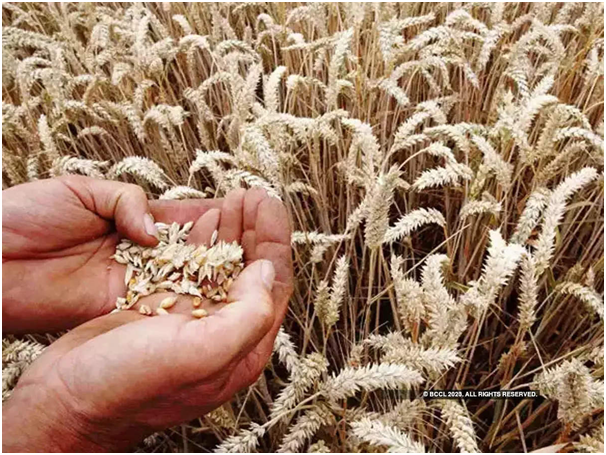Ceiling on Wheat Stocks
Context: Recently, the Union Government imposed limits on stock of wheat that can be held by traders, wholesalers, retailers, big chain retailers and processors. The objective here is to stabilise the price of the essential commodity by steadying supply.
What are the limits?
- The permissible stock that traders/ wholesalers can hold is 3,000 metric tonnes.
- Retailers and big chain retailers can hold up to 10 metric tonnes at each of their outlets, while the latter can hold up to 3,000 metric tonnes at all their depots combined.
- Processors would be able to stock 75% of the annual installed capacity.
- The mentioned entities are expected to declare their stock positions and update them regularly on the Department of Food and Public Distribution’s portal.
- If the stock held by them are higher than the limit, they will have 30 days from the day of issue of notification to bring the same under the prescribed limits.
What are the additional orders?
- The government has also decided to offload 15 lakh tonnes of wheat from the central pool via the Open Market Sale Scheme (OMSS) to flour mills, private traders, bulk buyers, manufacturers of wheat products through e-auction.
- The idea is to control retail prices of wheat. They would be sold in lot sizes of 10 to 100 metric tonnes.
- This would be the first tranche, and more could be released depending on the prices and demand.
- The Food Secretary also announced that the government would offload rice under OMSS to moderate its prices.
- The quantity of the first phase of the e-auction (for rice) would be decided shortly.
Why is there a concern?
- The moves come in the backdrop of rising concerns about the overall wheat output taking a hit after the unseasonal rains and hailstorms towards the end of March and early April alongside hotter temperatures in February.
- Lower production leads to higher prices of the crop. This could in turn create conditions for local prices exceeding the government’s purchase prices and thus, bothering the latter’s endeavour to stock up supplies.
- The daily average price of wheat at the retail level, on June 14, stood at ₹29/kg compared to ₹27.54/kg a year back.
- At the wholesale level, it stood at ₹2,593.5 for each quintal against ₹2,557.89/quintal for the previous month and about ₹2,423/quintal a year back.
- The Food Corporation of India is entrusted with the responsibility to ensure food grains are accessible at reasonable prices to the vulnerable sections of society under the Public Distribution System.
- The government had set a target of procuring 341.5 lakh metric tonnes of wheat for the Central Pool in the ongoing Rabi Marketing Season (RMS) 2023-24. RMS rolls from April to March with the maximum proportion acquired around April and June.
- As on June 12, 261.99 lakh metric tonnes of wheat have been procured. India’s wheat procurement in 2023 could fall by a fifth from the initial estimate as government purchases have slowed down in the last few days after local prices jumped.
- As of June, the government had 313.9 lakh metric tonnes of wheat in the central stock compared to 311.42 lakh metric tonnes in the year-ago period.
What about production?
- Notwithstanding the warnings from experts about the potential effects of El Nino, the Agricultural Ministry estimates the production of wheat at a record 1,127.43 lakh metric tonnes for the agriculture year 2022-23, higher by 50.01 lakh metric tonnes from previous year’s production.
- The optimism is premised around the increased area of wheat sowed and better yield
| Practice Question
1. Why has the government imposed a ceiling on the wheat stocks? How it will impact industry and exports? |




